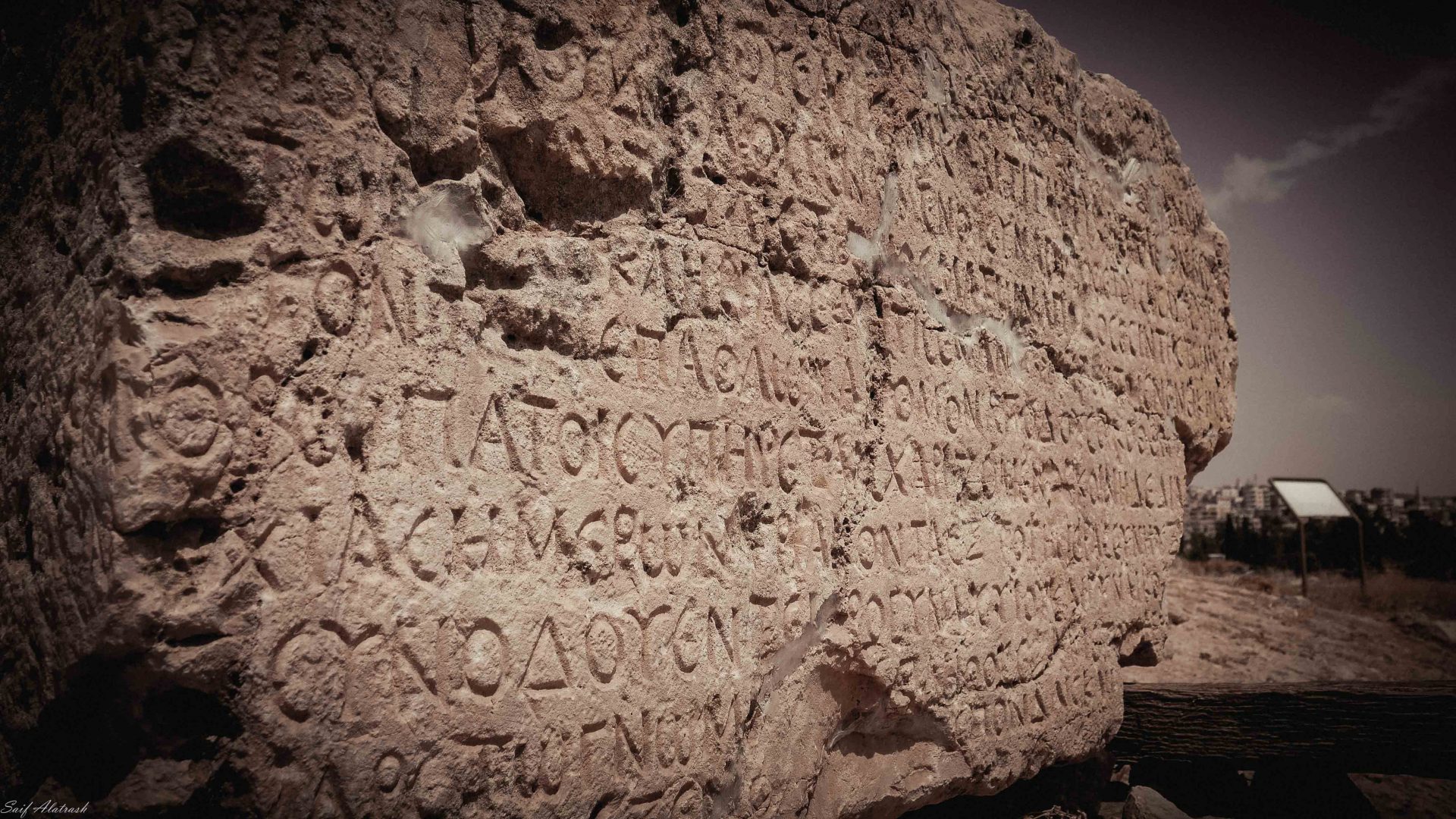Epigraphy
Online
- Epigraphik-Datenbank Clauss-Slaby
Provides texts and bibliographic citations for “nearly all Latin inscriptions.” Search the CIL (see below) here. - Inscriptiones Graecae (IG)
Searchable database of IG volumes published after 2001 (with the addition of I(3) 2, published in 1994). All inscriptions are translated into German (which is also searchable). - Searchable Greek Inscriptions
Significant collection of Greek inscriptions culled from a variety of publications. Maintained by the Packard Humanities Institute (based on PHI CD-ROM #7). Search the IG (see below) here. - Attic Inscriptions Online
Searchable database of English translations of inscriptions from ancient Athens and Attica. - Claros Concordance
Correlates the multiple editions of published Greek inscriptions. - Eichstaett Concordance of Greek and Latin inscriptions (ConcEyst)
Contains both Greek and Latin inscriptions; continually updated but you need to download the interface and data to a computer. - Epigraphic Database Heidelberg
Contains the texts of Latin and bilingual (i.e. Latin-Greek) inscriptions of the Roman Empire. The epigraphic monuments are collected and kept up to date on the basis of modern research. With the help of search functions specific queries can be carried out – e.g. a search for words in inscriptions and / or particular descriptive data. The search results are often displayed together with photos and drawings. The geographic focus is provided by the provinces of the Roman Empire. - L’Année épigraphique
Important annual collects and publishes all new Latin inscriptions as well as emendations of previously edited texts. Also includes Greek inscriptions of the Roman Empire (since 1966). - Corpus Inscriptionum Latinarum (CIL)
“Allows access to the collection of squeezes, photographs and bibliographical references maintained by the CIL research centre, sorted by inscription-number.” In addition, digitizations of the volumes published before 1940 can be viewed at Arachne, the object database of the Deutsches Archäologisches Institut. - Electronic Archive of Greek and Latin Epigraphy (EAGLE) Single search interface to four major epigraphical projects, which can also be searched separately at the following links:
- Epigraphic Database Bari (based on the Inscriptiones Christianae Urbis Romae)
- Epigraphic Database Roma (primarily Latin inscriptions from Italy)
- Epigraphische Datenbank Heidelberg (primarily Latin inscriptions from the rest of the Roman Empire)
- Hispania Epigraphica (HE) (primarily Latin inscriptions from Spain)
- Inscriptiones Christianae Graecae
Early Christian inscriptions from Asia Minor and Greece. Provides the original text and a translation of the inscription, including commentary and bibliographic references. Images and/or facsimiles are provided when available. - Trismegistos
Database of metadata and, when available, links to images of “texts from the ancient world, particularly late period Egypt and the Nile valley (roughly BC 800 and 800 AD).” - Papyrus Archives in Graeco-Roman Egypt
- TM Magic — Religious, Ritual, Magical and Divinatory texts
- Leuven Database of Ancient Books
“texts that were intended to reach the eyes of a reading public …” - Understanding Roman Inscriptions. Keppie, Lawrence. Baltimore, MD: John Hopkins University Press, 1991. Classmark: CN 510 KEP
Offers valuable help in reading and dating inscriptions – also available in library.
Specific Regions
- Inscriptions of Aphrodisias
- Inscriptions of Roman Tripolitania
- Vindolanda Tablets Online
Online edition of the Vindolanda writing tablets excavated from the Roman fort at Vindolanda in northern England. - Vindolanda Tablets Online II
“Sister website to Vindolanda Tablets Online (VTO). VTO2 is meant not as a replacement but as an addition to VTO.” - Roman Inscriptions of Britain
- Curse Tablets from Roman Britain
Texts and archaeological context of inscribed lead tablets from Roman Britain. - Epigraphic Database for Ancient Asia Minor
Database currently includes Greek and Latin inscriptions from “several regions from the Roman province Galatia” (with those of Laodiceia being added). Inscriptions are accompanied with detailed commentary in German. - MAMA (Monumentae Asiae Minoris Antiqua)
Welcome to the homepage of Monumenta Asiae Minoris Antiqua (MAMA) XI, a corpus of 387 inscriptions and other ancient monuments from Phrygia and Lykaonia - Etruscan Texts Project
Database of Etruscan inscriptions. - Inscriptions of Israel Palestine
- US Epigraphy
Database of some 2,500 Greek and Latin inscriptions preserved in the USA. - Current Epigraphy
Blog publishing “workshop and conference announcements; notices of discoveries, publications and reviews; project reports; and descriptive links to digital epigraphic projects.” - Guide de l’épigraphiste: Supplements
Downloadable supplements to the Guide de l’épigraphiste (3rd ed.)
- Supplementum Epigraphicum Graecum (SEG). Classmark: PER CN 1.S8
Database of published Greek inscriptions, providing the complete Greek text and critical apparatus of new inscriptions as well as summaries of new readings, interpretations, and studies of those previously known. See here for a concordance of IG inscriptions with SEG entries. - Epigraphic Evidence: Ancient History from Inscriptions. Bodel, John, ed. London; New York: Routledge, 2001.
Classmark: CN 350 BOD.
This work includes a useful appendix with guides to standard epigraphic collections, such as the Corpus Inscriptionum Latinarum, Inscriptiones Graecae, Sylloge Inscriptionum Graecarum, and Inscriptiones Latinae Christianiae Veteres. - Corpus Inscriptionum Latinarum. Berolini: G. Reimerum, 1862-.
Classmark: F CN 520 V.6VI
Searchable online; see Epigraphik-Datenbank Clauss-Slaby above. - Illustrated Introduction to Latin Epigraphy. Gordon, Arthur E. Berkeley, CA: University of California Press, 1983.
Classmark: CN 510 GOR
Gives provenance, lists abbreviations and Roman names. Discusses problems in dating and paleography. - Inscriptiones Graecae. Berolini: G. Reimer, 1873-.
Classmark: LRG CN 360 KER
Searchable online. See above. - Latin Epigraphy: An Introduction to the Study of Latin Inscriptions. Sandys, J.E. (rev. S.G. Campbell). Cambridge: Cambridge University Press, 1927/1974.
Classmark: CN 510 SAN - The Study of Greek Inscriptions. Woodhead, A. Geoffrey. 2nd ed. New York: Cambridge University Press, 1981.
Classmark: CN 350
This is the standard introduction to the field for readers in English. Provides a guide to the major corpora of published Greek inscriptions.
Papyrology Online
- CEDOPAL: Mertens-Pack 3 online DatabaseComprehensive database of Greek and Latin literary papyri. Search results include extensive bibliographies.
- Digital Corpus of Literary Papyri (DCLP)
“Offers information about and transcriptions of Greek and Latin literary and sub-literary papyri preserved on papyri, ceramic sherds (ostraka), wooden tablets, and other portable media.” - Papyri.info / Papyrological NavigatorSingle search interface integrates metadata, transcriptions, translations and images from three important sources of documentary papyri, which can also be searched separately at the following links:
- Advanced Papyrological Information System (APIS)
- Duke Databank of Documentary Papyri (DDbDP)
- Heidelberger Gesamtverzeichnis der griechischen Papyrusurkunden Ägyptens
- Trismegistos
Database of metadata and, when available, links to images of “texts from the ancient world, particularly late period Egypt and the Nile valley (roughly BC 800 and 800 AD).” - Papyrus Archives in Graeco-Roman Egypt
- TM Magic — Religious, Ritual, Magical and Divinatory texts
- Leuven Database of Ancient Books
“texts that were intended to reach the eyes of a reading public …” - Checklist of Editions of Greek, Latin, Demotic and Coptic Papyri, Ostraca and Tablets
“A ready bibliography of all monographic volumes, both current and out-of-print, of Greek, Latin, Demotic and Coptic documentary texts on papyrus, parchment, ostraca or wood tablets.” - Corpus papyrorum latinarumBibliographical resources for Latin papyri hosted by CEDOPAL.
- Organa Papyrologica
Attempts to provide a single search interface for all digitized and electronically cataloged papyrus collections in Germany and its neighbouring countries. It includes the Papyrus Portal, the Papyrus and Ostraca Project Halle-Jena-Leipzig. The data of the collections in Basel, Bremen, Erlangen, Cologne, Marbury, Wuerzburg and Giessen are made available, too. - POxy: Papyri Oxyrhynchus OnlineOnline table of contents for all Oxyrhynchus volumes and digital images of the papyri from v. 15 on. Basic metadata but no transcriptions. See the Location lists for locating the papyri of the early volumes (1-18). Also, see here for the images of three other important Oxford collections:
- P. Ant. (Antinoopolis Papyri),
- P. Herc. (Herculaneum Papyri) and
- Suppl. Mag. (Supplementum Magicum).
- What’s New in Papyrology (most recent entry 2016)
Blog listing “recent publications of papyri & ostraca 4th BC-8th AD.”




